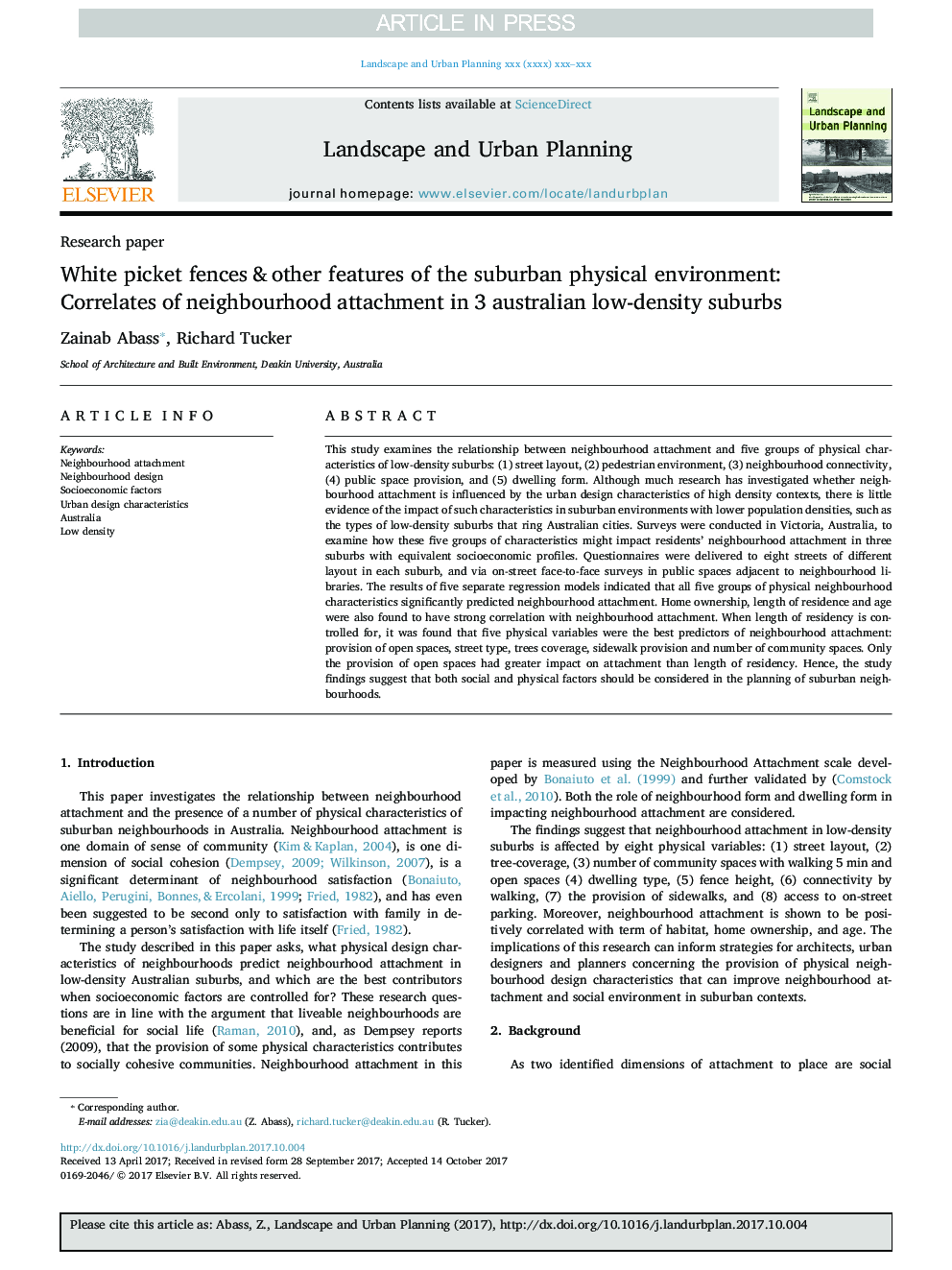| Article ID | Journal | Published Year | Pages | File Type |
|---|---|---|---|---|
| 7460092 | Landscape and Urban Planning | 2018 | 10 Pages |
Abstract
This study examines the relationship between neighbourhood attachment and five groups of physical characteristics of low-density suburbs: (1) street layout, (2) pedestrian environment, (3) neighbourhood connectivity, (4) public space provision, and (5) dwelling form. Although much research has investigated whether neighbourhood attachment is influenced by the urban design characteristics of high density contexts, there is little evidence of the impact of such characteristics in suburban environments with lower population densities, such as the types of low-density suburbs that ring Australian cities. Surveys were conducted in Victoria, Australia, to examine how these five groups of characteristics might impact residents' neighbourhood attachment in three suburbs with equivalent socioeconomic profiles. Questionnaires were delivered to eight streets of different layout in each suburb, and via on-street face-to-face surveys in public spaces adjacent to neighbourhood libraries. The results of five separate regression models indicated that all five groups of physical neighbourhood characteristics significantly predicted neighbourhood attachment. Home ownership, length of residence and age were also found to have strong correlation with neighbourhood attachment. When length of residency is controlled for, it was found that five physical variables were the best predictors of neighbourhood attachment: provision of open spaces, street type, trees coverage, sidewalk provision and number of community spaces. Only the provision of open spaces had greater impact on attachment than length of residency. Hence, the study findings suggest that both social and physical factors should be considered in the planning of suburban neighbourhoods.
Related Topics
Life Sciences
Agricultural and Biological Sciences
Ecology, Evolution, Behavior and Systematics
Authors
Zainab Abass, Richard Tucker,
